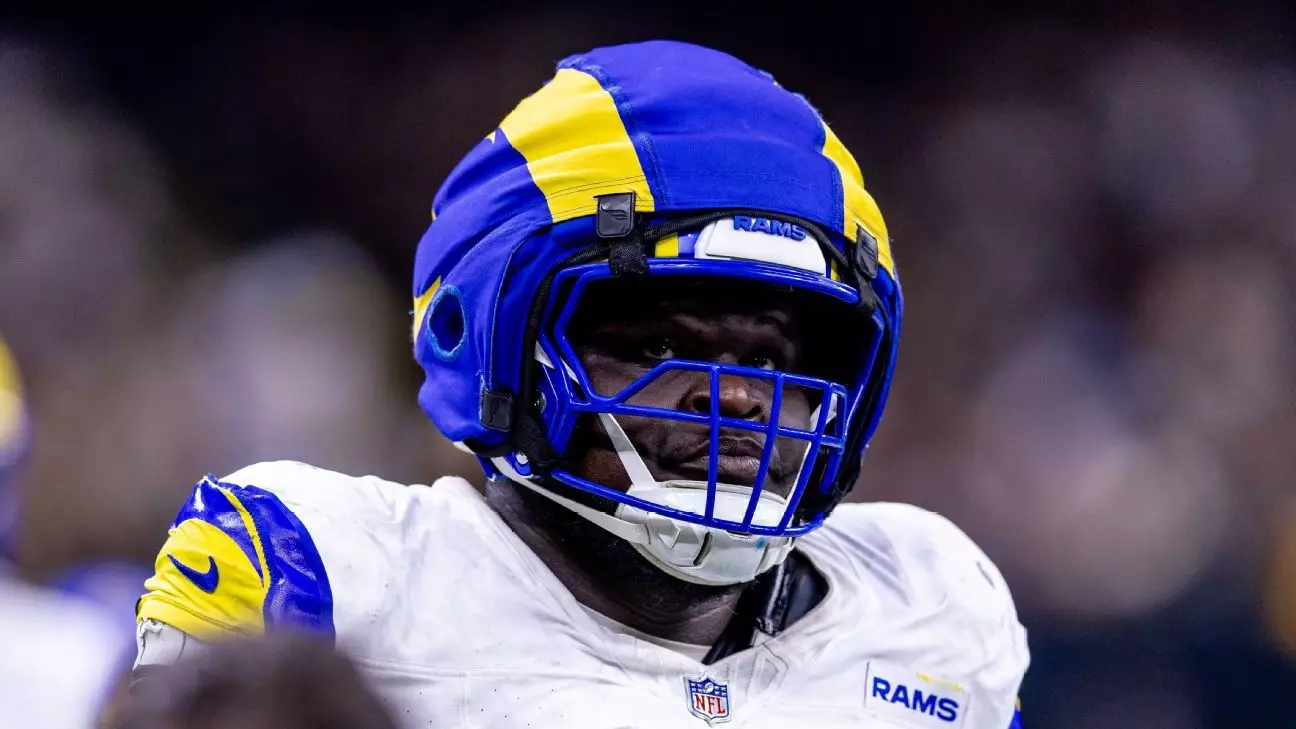In a significant announcement, the NFL has reported its lowest recorded number of concussions since the tracking of such data began in 2015. With the figures showing just 182 concussions during both preseason and regular season games in 2024, this marks a monumental 17 percent decline from the previous year. Notably, this figure surpasses the previous low of 187 concussions recorded in 2022, offering a hopeful perspective on the efficacy of measures aimed at enhancing player safety. For context, the average number of concussions over the last five years, excluding the COVID-impacted season of 2020, was approximately 211.4 concussions per season.
These statistics would generally be seen as a triumph for the league, indicating that the multifaceted approaches to mitigate head injuries—ranging from improved helmet technology to enforced safety protocols—are beginning to show tangible results. However, Dr. Allen Sills, the NFL’s chief medical officer, is cautious in his optimism, emphasizing that while the data is encouraging, it does not signify a conclusion to their efforts. His observation underscores a crucial reality: the fight against concussions is ongoing, and the ultimate goal remains to not only reduce concussion incidents but also minimize the frequency of all avoidable head impacts.
Key to this decline are the strategic initiatives implemented by the NFL, which include enhancements in helmet technology and the early adoption of protective gear such as Guardian Caps. According to Sills and Jeff Miller, the NFL’s executive vice president responsible for player health and safety, these factors were instrumental in achieving the recorded reduction in concussion rates.
The league reported that 35 percent of players upgraded their helmets based on rankings established by the NFL and NFL Players Association, a significant increase from the typical rates hovering between 14 percent and 17 percent in previous seasons. Furthermore, a notable shift was seen with about one-third of eligible players opting for helmets tailored specifically for the positions they play. This uptick in helmet quality likely correlates with the league’s focused efforts on concussion prevention.
Additionally, the Guardian Caps—which are mandatory for specific player positions during training camps and practices—were noted to have contributed significantly to the reduced concussion occurrences. Sills remarked on the substantial difference these caps have made, citing a prior 50 percent reduction in concussions among players who utilized this specific gear. While approximately 20 players chose to wear these caps during regular-season matches, the sample size remains too small for definitive conclusions regarding their benefits in game scenarios.
The NFL’s shift in kickoff rules resulted in a remarkable 43 percent decline in concussion rates associated with kickoffs. Despite the decrease in concussion rates, it is worth noting that the absolute number of concussions resulting from kickoffs remained stable at eight, similar to the previous year. The implementation of these new regulations has generated a more dynamic playing environment for returns, illustrating the complexities of injury prevention amidst evolving gameplay.
Moreover, the league’s new metrics explore the relationship between high-speed plays—defined as those where participants are traveling at least 15 miles per hour—and concussions. Initial findings reveal that such high-velocity impacts result in a significantly elevated concussion rate, 26 times higher than standard plays. This alarming statistic may prompt further investigation and targeted interventions in tackling such high-risk scenarios.
While the NFL has made noteworthy strides in concussion management and player safety, Dr. Sills’ reminder of the need for continued focus on preventing head injuries should resonate throughout the league and beyond. The league acknowledges that player health and safety measures need to evolve alongside advancements in gameplay and athlete participation. Future plans should not only address the immediate concerns over concussions but also focus on broader safety measures that encompass all aspects of game play.
As the NFL moves forward, maintaining vigilance in injury prevention, developing superior protective equipment, and educating players about safety protocols must remain paramount. Doing so is essential for fostering an environment that prioritizes player health, ultimately benefiting the athletes, the sport, and its fans alike.


Leave a Reply